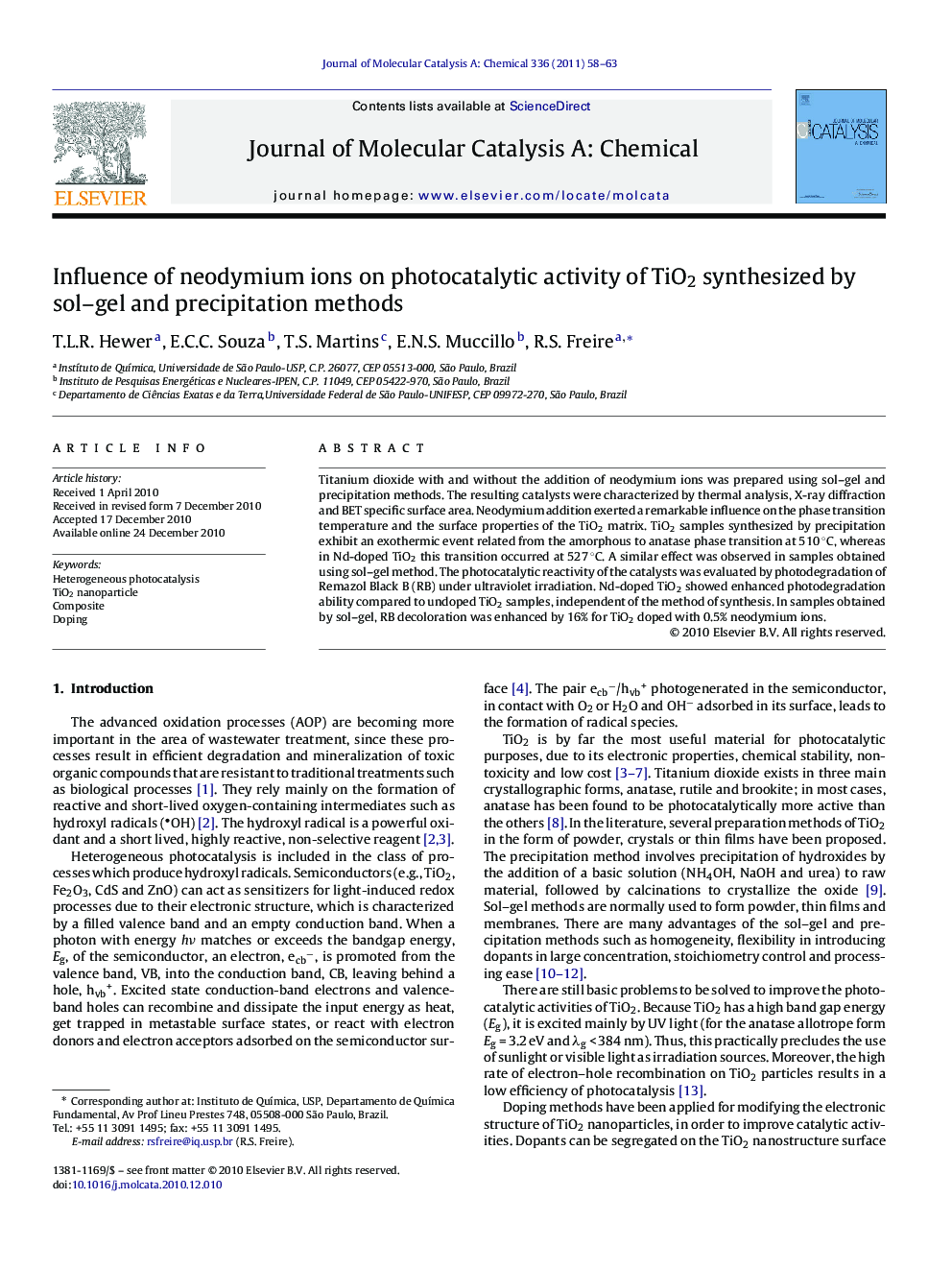| Article ID | Journal | Published Year | Pages | File Type |
|---|---|---|---|---|
| 66601 | Journal of Molecular Catalysis A: Chemical | 2011 | 6 Pages |
Titanium dioxide with and without the addition of neodymium ions was prepared using sol–gel and precipitation methods. The resulting catalysts were characterized by thermal analysis, X-ray diffraction and BET specific surface area. Neodymium addition exerted a remarkable influence on the phase transition temperature and the surface properties of the TiO2 matrix. TiO2 samples synthesized by precipitation exhibit an exothermic event related from the amorphous to anatase phase transition at 510 °C, whereas in Nd-doped TiO2 this transition occurred at 527 °C. A similar effect was observed in samples obtained using sol–gel method. The photocatalytic reactivity of the catalysts was evaluated by photodegradation of Remazol Black B (RB) under ultraviolet irradiation. Nd-doped TiO2 showed enhanced photodegradation ability compared to undoped TiO2 samples, independent of the method of synthesis. In samples obtained by sol–gel, RB decoloration was enhanced by 16% for TiO2 doped with 0.5% neodymium ions.
Graphical abstractTiO2 with Nd was prepared using sol–gel and precipitation methods. The Nd changed the TiO2 surface properties. The photocatalytic activities of the Nd–TiO2 materials are higher for Remazol Black degradation.Figure optionsDownload full-size imageDownload high-quality image (138 K)Download as PowerPoint slideResearch highlights▶ Nd doping had an influence on the physical and chemical properties of TiO2. ▶ The syntheses route and Nd presence play a very important role in the TiO2 properties. ▶ Nd doping change the transition phase temperature of TiO2. ▶ Nd–TiO2 is photocatalytic more efficient than undoped TiO2.
